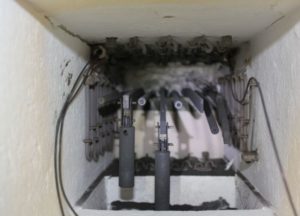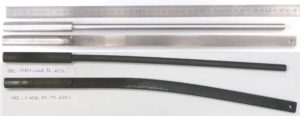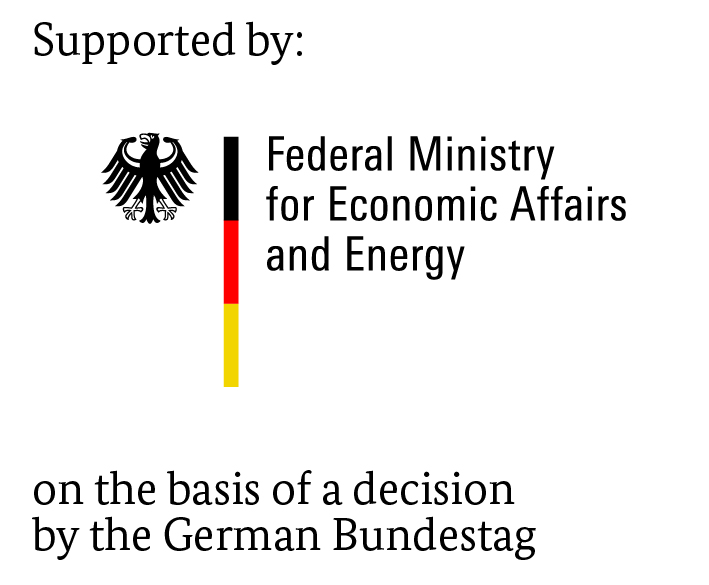New insights into the service life of metallic furnace components

Test furnace with rectangular and round beams at the end of a test with temperature cycles. Photo: OWI
12 December 2019 – A realistic service life calculation of components can help making the operation of industrial furnaces even more economical in the future. In a joint research project the Oel-Waerme-Institut, the Institut für Industrieofenbau und Wärmetechnik (IOB) of the RWTH Aachen and the Institut für Werkstoffkunde (IfW) of the Technische Universität Darmstadt have gained new important insights into this and implemented them in the development of a method for calculating service lifes. Manufacturers of industrial furnaces may use the research results for a more reliable design of furnace components. Plant operators will be able to more accurately determine the remaining service life of the components and thus to develop strategies for optimized furnace operation under economic aspects such as production throughput, service life and failure probability.
At high temperatures, metallic furnace components such as radiant heating tubes, furnace muffles, retorts and furnace rollers are simultaneously exposed to high-temperature corrosion and static mechanical loads. Under these conditions, corrosion and deformation due to creep determine their service life. The focus of the research project was to study the effect of temperature changes at very high temperatures and relatively low mechanical stresses. The task of the OWI was to investigate the creep of samples with component-like geometry and to examine corrosion.

Round and rectangular beams in initial condition (top) and deformed by creep after 629 hours under periodic temperature changes (bottom). Photo: OWI
In the various experiments carried out, a higher average creep rate was found under periodic temperature changes than under isothermal but otherwise identical conditions. An essential result of the project were the analytical creep equations developed by the IfW on the basis of creep curves. The equations contain a term with a temperature change rate as an innovation and thus include the effect of temperature changes. The corrosion of samples by oxidation was not or only slightly accelerated by the temperature changes depending on the material. From experimental data, OWI has created special diagrams and shown how to estimate the chromium loss and the remaining oxidation resistance of the material for a certain operating time with the help of these corrosion diagrams.
Until now, only isothermal creep data and the data of isothermal creep curves were available to material manufacturers and companies in the process of furnace construction. In future with the data collected in the research project and the creep descriptions developed, it will be possible to estimate the service life more closely to the application by incorporating thermal load changes.
 The IGF project 19068 N “Einfluss thermischer Lastwechsel auf die Lebensdauer hochbelasteter Ofenkomponenten aus metallischen Hochtemperatur-Werkstoffen” (Effect of temperature changes on the service life of highly stressed furnace components made of metallic high-temperature materials) of the Forschungsvereinigung Forschungskuratorium Maschinenbau e. V. – FKM, Lyoner Straße 18, 60528 Frankfurt am Main was funded by the AIF within the framework of the Program for the Promotion of Industrial Community Research (IGF) of the Federal Ministry of Economics and Energy (BMWi) on the basis of a resolution of the German Bundestag.
The IGF project 19068 N “Einfluss thermischer Lastwechsel auf die Lebensdauer hochbelasteter Ofenkomponenten aus metallischen Hochtemperatur-Werkstoffen” (Effect of temperature changes on the service life of highly stressed furnace components made of metallic high-temperature materials) of the Forschungsvereinigung Forschungskuratorium Maschinenbau e. V. – FKM, Lyoner Straße 18, 60528 Frankfurt am Main was funded by the AIF within the framework of the Program for the Promotion of Industrial Community Research (IGF) of the Federal Ministry of Economics and Energy (BMWi) on the basis of a resolution of the German Bundestag.





